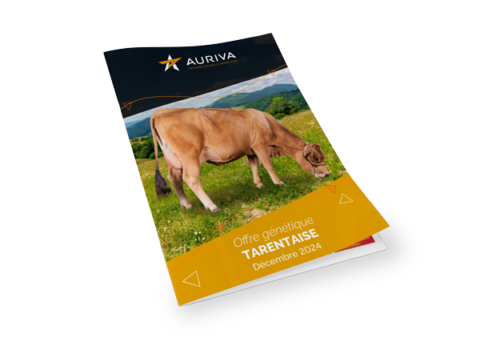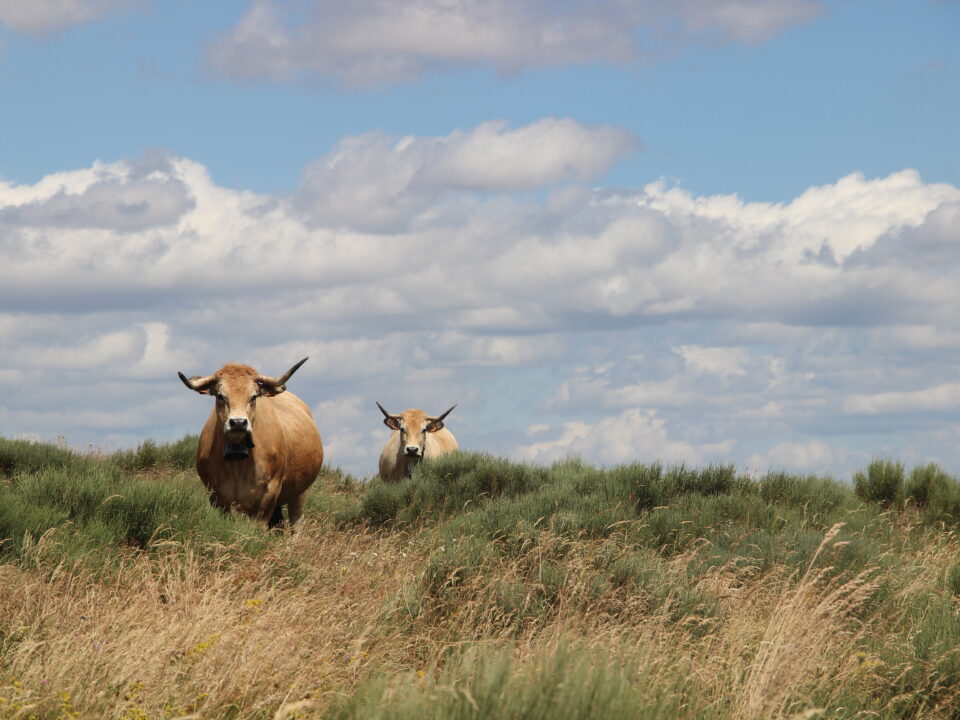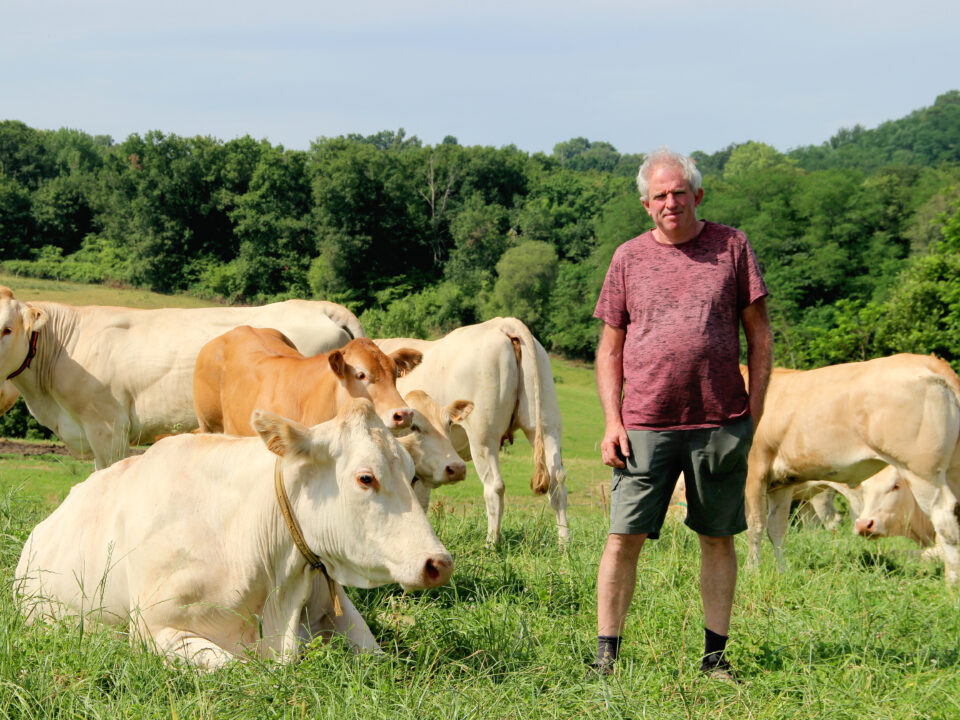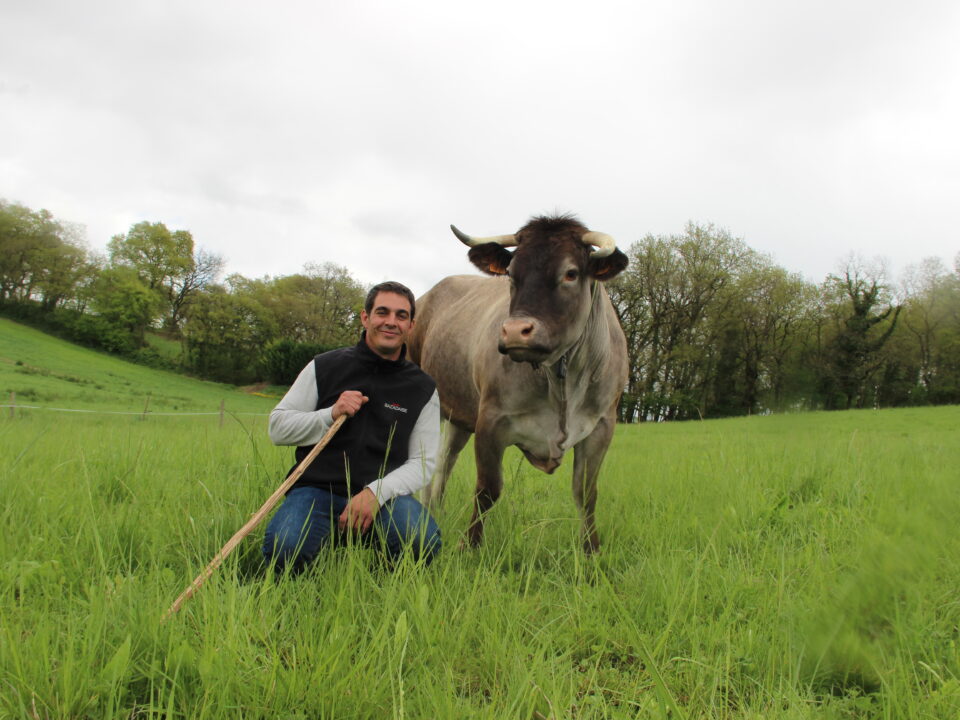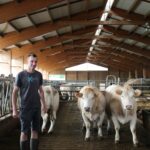
Optimize to win!
17 December 2024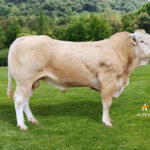
Blond bull ROTCHILD is available for AI!
10 February 2025Promoting a region through the “Tome des Bauges” PDO (protected designation of origin)

Ancestral know-how but a fairly recent PDO
Already produced in the 17th century, Tome des Bauges cheese is the product of an ancient tradition and know-how.
Breeders from the Bauges massif set up a Société d’intérêt collectif agricole (agricultural collective interest company) and registered a “Tome des Bauges” trademark with INPI (the French national institute for industrial property) in 1972.
However, we had to wait until 2002 for the creation of the Tome des Bauges appellation d’origine contrôlée (AOC), and until 2007 for European protection through a protected designation of origin (PDO).
The geographical area corresponds to the Bauges sub-alpine massif, covering some 80,000 hectares.
Dairy herds on farms producing milk for Tome des Bauges are made up of cows from the Abondance, Tarentaise and Montbéliarde breeds. Each herd must be made up of at least 55% Tarines and Abondances.
On the other hand, average cow production must not exceed 6,000 kg of milk per year.
Cows must graze a minimum of 120 days a year. Silage, wraps and green feed are forbidden on farms all year round. Concentrate intake is limited to 1500 kg per year per lactating cow. For heifers, concentrates are limited to 250 kg per animal per year.
A small tomme with a typical taste
Tome des Bauges is a pressed, salted, bloomy-rind cheese made from whole or partly skimmed raw cow’s milk, and requires a long, precise manufacturing process.
It takes the form of a cylinder with a diameter of 18 to 20 cm, a height of 3 to 5 cm and a weight of 1.1 to 1.4 kg when fully matured. Its crust is “tormented”, i.e. it has reliefs and irregularities. It is 2 to 3 mm thick. It is gray in color, on which “flowers” may develop naturally, with pigmentation ranging from yellow to brown. Its paste is slightly firm to supple, ivory yellow in color and may have small openings.
The collection area for each manufacturing site must be made up of farms whose headquarters must not exceed 15 km by road.
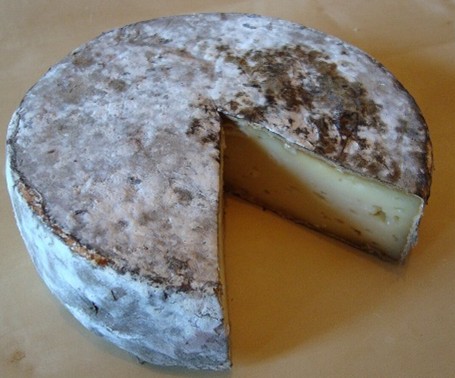
Renneting lasts around 20 minutes, and must take place in copper vats with a maximum capacity of 3,000 liters. At the end of the curdling process, the curd should be the size of a corn kernel. Moulding is carried out either manually or by gravity, collecting the curds directly in the mould where they are distributed. Curd pumping is forbidden. It is also at this stage that an oval “Tome des Bauges” identification plate is affixed. It will be green if the cheese is produced on the farm, and red if it is produced by a cooperative.
The cheese is pressed by stacking 3 or 4 wheels on top of each other for a minimum of 7 hours. The cheeses must be turned at least 4 times during the pressing phase. Dry salting is carried out manually. Maturation takes place in a cellar at a temperature not exceeding 15°C, with a minimum humidity of 95%. It is carried out on spruce boards, which must be sourced from the geographical area, and must last a minimum of 5 weeks.
Throughout its maturing period, the tome undergoes several turnings.
Meet Laurent, partner at GAEC LA MARMOTTE EN BAUGES,
producers of Tome des Bauges cheese.
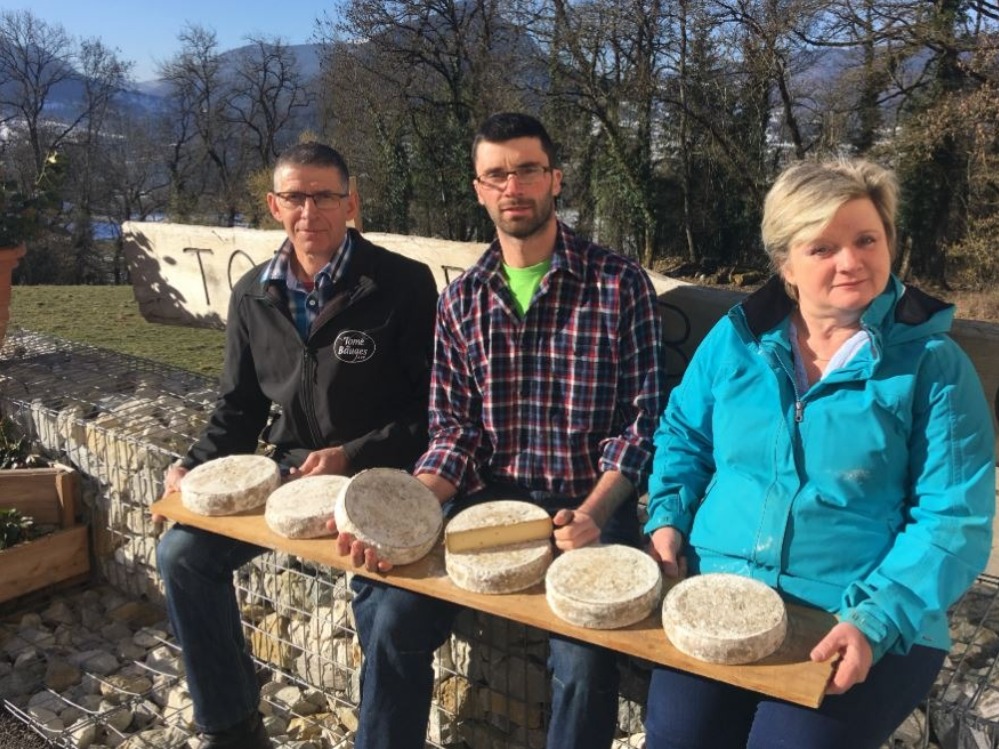
Could you tell us about the GAEC?
“We are based in the commune of La Motte en Bauges. The GAEC is made up of 4 labour-intensive units, where we raise around 50 dairy cows and around 50 heifers for renewal, all organically farmed. The usable agricultural area is 80 hectares, including 15 hectares of alpine pasture where we keep our heifers.
We produce 250,000 liters of milk a year, all processed on the farm into Tome des Bauges, Raclette, fromage frais, etc… The average per cow is 5,000 liters per year. The average rates on the farm are: 36.1 in TB and 32.6 in TP on average over the last 6 months”.
How is the Tarine breed suited to the production of this cheese? Why did you choose this PDO?
“Our herd is mainly made up of Tarines, as my parents have always raised them. We’ve had strains for several generations that we love to work with.
The Tarine is a breed we appreciate for its calm, sociable character. It is also easily adaptable and resistant to temperature variations. When it comes to milk quality, they are a major asset to our cheese. To “compensate” for a lower milk production than some other breeds, we also breed some abondances and montbéliardes, breeds also accepted within the Tome des Bauges specifications.
Producing Tome des Bauges is a real choice, because it allows us to promote our products in the region, even if the PDO is still little known by consumers today.
How do you market your products?
“We sell mainly in the farm store, but also in farm stores, cheese shops, creameries, etc. Some local restaurants also feature our products on their menus.
The fact that the farm is organic means higher costs in terms of feed and animal care, but today a liter of milk is valued at around €1,350 per tonne. We’re in a farming system that suits us!

